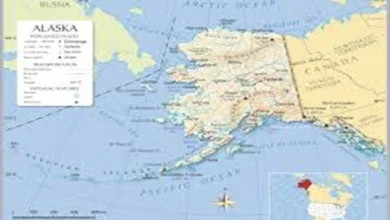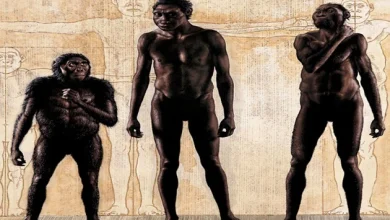The Great Wall of China facts

An artificial monument called the Great Wall of China is one of the most well-known in the world. People from all over the world come to see it every year. Engineers built huge fortifications that covered a lot of northern China. A customs warehouse was built on the Great Silk Road to keep things in order at the border between China and the rest of the world. It was built to keep nomadic tribes out of the country.
In the beginning, it was made of simple rammed earth. Bricks were later used and laid down by a million laborers who worked together. It has been estimated that 70% of the Chinese population helped build the first parts of the Great Wall during the Qin Dynasty.
There are a lot of misconceptions about how big the Great Wall of China is, so let’s dispel them. There are many great artificial structures all around us. Please keep reading to learn more about one of them!
The Great Wall of China map
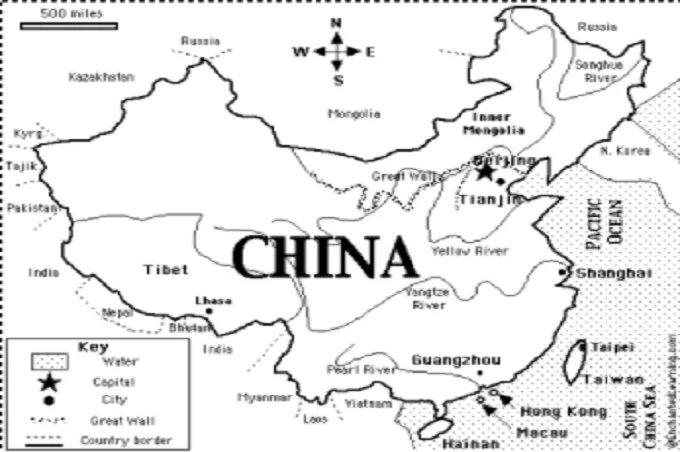
Great Wall of China’s location is mainly in northern China, and there are a few sections in southern China called the southern Great Wall.
11 facts about the Great Wall of China
1. The Great Wall of China is the longest man-made structure in the world
The wall is the longest artificial structure globally, with a total length of about 13170.7 mi or 21196.18 km. Made throughout hundreds of years, the wall was built by over 6 different Chinese dynasties and is over 2,300 years old.
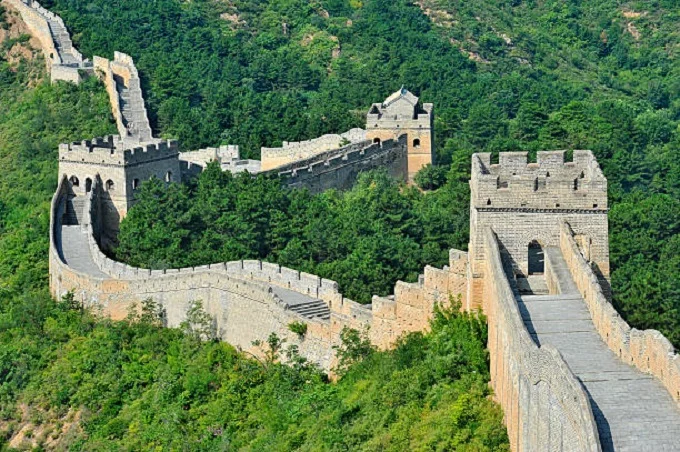
2. The Great Wall of China was built more than 1800 Years
In 221 BCE, Emperor Qin Shi Huang conquered the neighboring countries and established the Qin Dynasty.
To safeguard his newly acquired land, he began building a 5,000-kilometer wall.
The construction of walls around Chinese lands to defend residents from enemy incursions was common.
3. The Great Wall of China is not one single wall
The name “Great Wall of China” makes it seem like it’s a huge line of bricks. It isn’t. There are many different fortifications that make up what is called one monument. Many of these walls run right next to each other. It’s also not true that all of these fortifications have real walls. Natural barriers like rivers and hills are also sometimes considered part of the Great Wall.
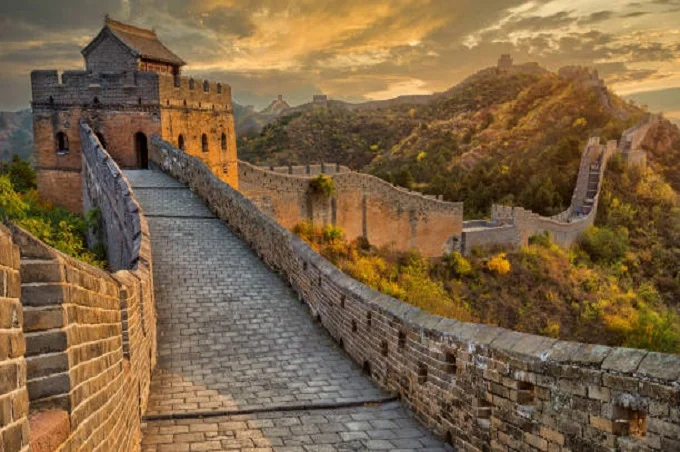
4. What we see now is relatively new
Several ancient Chinese states built the Great Wall of China in the 7th century BC. During the 3rd century BC, the first emperor of China, Qin Shi Huang, began to connect these wall parts. But most of these early walls have been torn down over time. Many of the Great Wall of China was built by the Ming Dynasty, but not all of it. From 1368 to 1644, they were in charge. They built a fort to keep out the nomadic Mongol tribes in the north.
According to official research, the Ming Dynasty is to blame for 8,850 kilometers of this incredible monument, which is a lot. This is 6,259 kilometers of the real wall, which are some of the most popular parts of the Great Wall of China today. Visitors come from all over the world to see Badaling, Mutianyu, and Jinshanling, three well-preserved parts of the wall near Beijing. It was built on top of the previous section of the wall. The Mutianyu section of the Ming was built in the 26th century AD. The Badaling and Jinshanling sections of the wall were built from scratch. These tourist areas are still open to the public, with Badaling being a place for official state visits.
5. The builders used rice for building
They used sticky rice to build more stable walls for the Great Wall of China. They added rice to the mortar recipe hoping that it would make it more durable. Rice has a lot of amylopectins, which is why the Great Wall of China has been around for so long.
6. The prisoners were sometimes forced to work on the wall
More than a million people worked on the wall, including civilians and people who had been in prison. People who had been soldiers and people who had also been convicted worked on it. For crimes like murder and tax evasion, convicts were made to work as laborers. This happened mainly during the Qin and Han dynasties. They had to be on guard during the day and work on buildings at night.
7. The Great Wall of China is slowly disappearing
According to the Beijing Times, about 2,000 kilometers, or 30%, of the ancient fortification built in the Ming Dynasty era has disappeared due to natural erosion and human damage. And the situation could worsen, experts are warning, as not enough is being done to preserve what remains.
Unfortunately, the Great Wall of China has to deal with more than just natural adversaries. Humans also continue to deal harmful damage. Sometimes plots in rural areas were demolished to make way for development or stripped for building materials. There is also a black market for Great Wall bricks, and tourists have been known to steal these precious items. Conservation groups are calling on the government to step up protection.
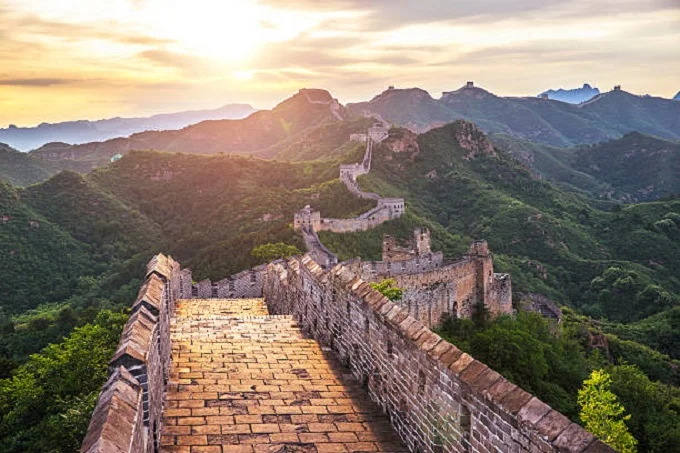
8. The Great Wall of China has inspired countless stories and legends
It is easy to imagine how such an impressive structure can affect the culture built by so many people. One of the most famous examples of how the Great Wall of China became part of the culture is the story called “Meng Jiang-nu’s Lament at the Great Wall of China.”
The story tells how Jiang-nu’s husband died while building the wall. He was one of approximately 400,000 people who died in the process. Her tears were so bitter that when she was mourning for her husband, part of the wall collapsed, and she could take her husband’s bones to bury him properly.
9. New parts of the Great Wall of China are still being opened
The Great Wall of China is so old that you might be surprised that researchers are still finding new parts of it, given how long ago it was built. In 2009, new wall parts from the Ming Dynasty were found thanks to infrared rangefinders and GPS. In the 290-mile stretch, there were hills, trenches, and rivers all over the wall.
A 10-kilometre section of the Great Wall of China was found on the border of Ningxia Hui Autonomous Region and Gansu Province in 2015. Archaeologists had thought there were no parts of the Great Wall in this area. The ruins are thought to be from places built during the Qin Dynasty. It flooded and eroded in nine places, lowering some places to 1–5 meters in height.
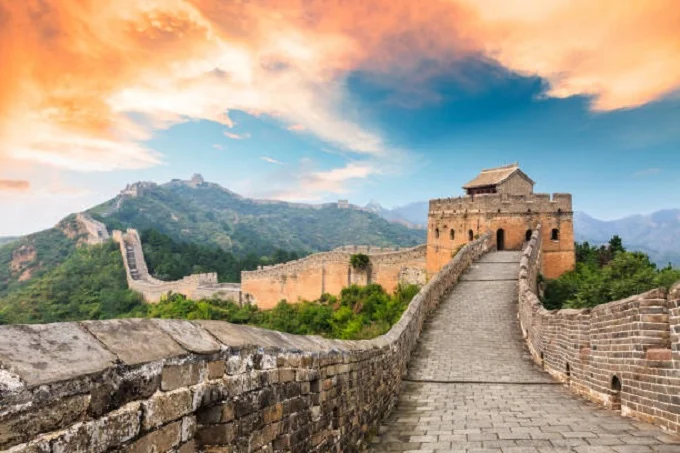
10. Roosters were used to guide the dead to crossover
The building of the wall was a deadly undertaking, with many lives sacrificed in the process.
The mourning relatives believed that the ghosts of their loved ones would be trapped at the wall forever once their loved ones died.
As a result, they attempted to release them by crossing the wall with a rooster in their hands. They thought the rooster would guide the imprisoned spirits away from the wall and into the other life, where they would be free.
11. The Great Wall of China is one of the New Seven Wonders of the World
The Great Wall of China was one of the New Seven Wonders of the World in 2007. Machu Picchu, the Taj Mahal, and the Colosseum are well-known landmarks.

